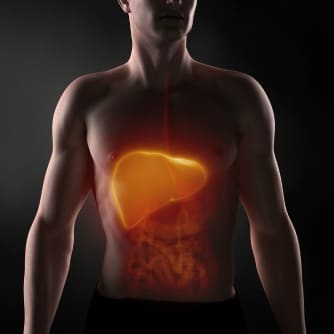The human body’s liver is quite amazing. It protects the body from harmful liquid toxins, generates chemicals and proteins required for digestion, regulates glycogen and recycles aged red blood cells. If the liver is not functioning as designed, it can lead to death. The liver is even capable of regenerating itself. It increases in size by 50 percent throughout the day.
Swiss researchers used mice to document the liver’s expansion and contraction throughout the day. They also watched liver cells increase in size two-fold then contract upwards of 40 percent. However, the liver only showed these remarkable abilities when mice engaged in their normal eating and resting cycles. Mice are nocturnal animals. If they eat during the day when they are typically at rest, their livers do not expand.
Increase, Contract, and Repeat
The liver is the sole organ that grows and shrinks to such an extent in a cyclical manner. This cycle makes sense as the human body’s organs have little to do when food is not consumed. Livers shrink and grow according to demand so the body does not waste energy. The Swiss research team watched the liver’s primary cells, hepatocytes, expand during the night when mice were especially active. This is attributed to the boost in ribosomes. These are cell structures that use RNA instructions to generate proteins. The liver pulls material from food and converts it to helpful proteins and other molecules that are essential for bodily functions. The presence of many ribosomes indicates they are better at performing their roles. When the daily cycle comes to an end, the liver breaks down the ribosomes.
The research team found that food intake is only one cause of the liver’s increased ribosome production. The time of day also matters. Cells within the liver are sensitive to circadian rhythms. The researchers determined mouse livers commence growth at night after the consumption of food. Mice that ate during the day did not show the same liver growth as those who ate at night. This means the liver responds to environmental cues as well as food.
Mice that were kept in a nocturnal state had a considerably smoother curve of expansion and shrinkage. The researchers observed a 1.6 fold gap in the amount of proteins in the liver at each of these extremes. Mice that were fed daily showed no difference.
Are the Findings Applicable to Humans?
Evidence exists that human livers have a similar ability. However, the sole source is a study conducted in 1986 that made use of ultrasound to gauge liver size across six hours. These researchers identified variations of about 20 percent though they did not measure liver length during nighttime hours when body rhythms are slower. These findings make the case for sleep cycles hinging on environmental cues.
Shining a bright light during one’s attempt to sleep has been linked to disturbed sleep cycles in human beings. Nighttime light also heightens the risk for diabetes, certain types of cancer, depression, and obesity. After all, the human body regulated itself for thousands of years with the daily motion of the sun. The human body settled into a restful state when the sun set. It ramped back up for activity when the sun rose.
The scientific research described above indicates illumination also extends to the human digestive system. Though the study’s authors have not elaborated on the implications of their research for human beings, such information will be elaborated on in due time. The research team’s findings might help explain why it appears to be quite unhealthy to extend bedtime far beyond the hours following sunset.




